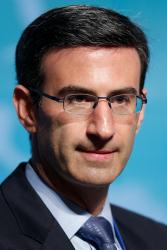State governments have historically taken the lead in financing higher education. In fiscal year 2002, state governments spent approximately $63 billion on subsidies to higher education institutions. In contrast, the federal government granted approximately $9 billion in aid to low-income students, provided $6 billion in Hope and Lifelong Learning tax credits, and guaranteed approximately $38 billion in loans. Yet over the past twenty years, state support for higher education has gradually waned, with the share of higher education expenditures subsidized by state appropriations declining.
One result of declining state support has been the widely publicized rise in tuition at public institutions. Recent media reports have documented the most recent wave of tuition increases at public universities and reductions in student aid across the nation as state governments struggle to close projected budget deficits.
A second result, which has been less well recognized, is a widening gap in expenditures per student and average faculty salaries at public and private institutions. Since roughly three-quarters of post-secondary students enroll in public institutions, it is important to understand the reasons for the shifting state priorities. In this paper, we use state-level data on expenditures since 1977 to study the forces underlying the shift in state financing.
More specifically, we examine interactions between state appropriations for higher education, other state budget items (especially Medicaid), and the business cycle. The first section documents the substantial decline in state support for higher education over the past two decades. The second section examines the causes of that decline, focusing particularly on expansions in the Medicaid program and the implications for state higher education spending. The third section explores the effects of the business cycle on higher education subsidies. The fourth section investigates the impact of declines in state appropriations for higher education on the relative quality of public higher education institutions.




